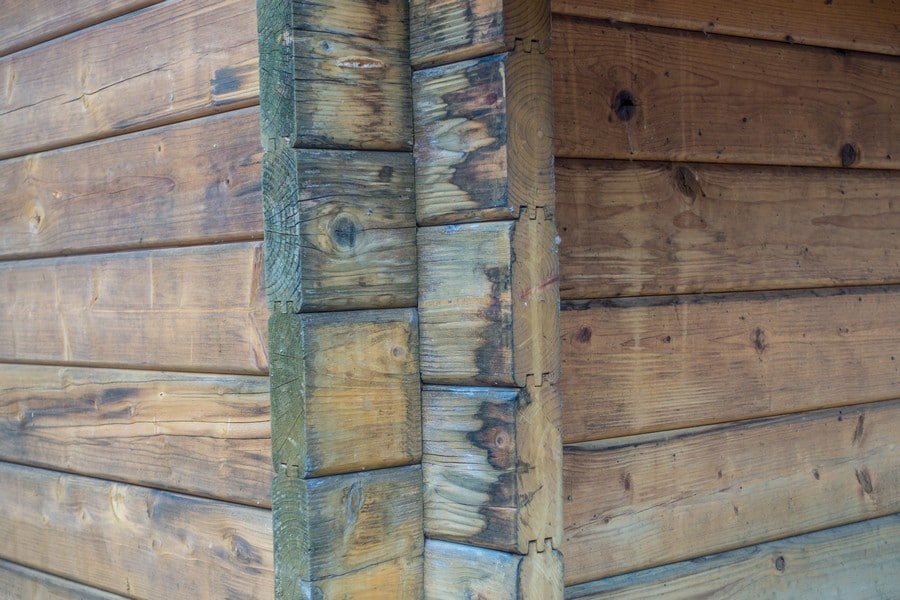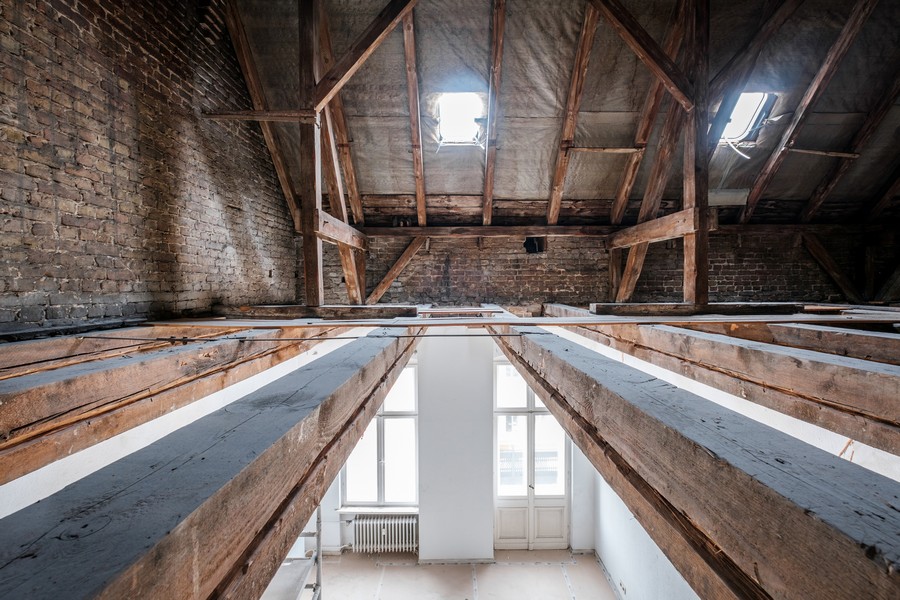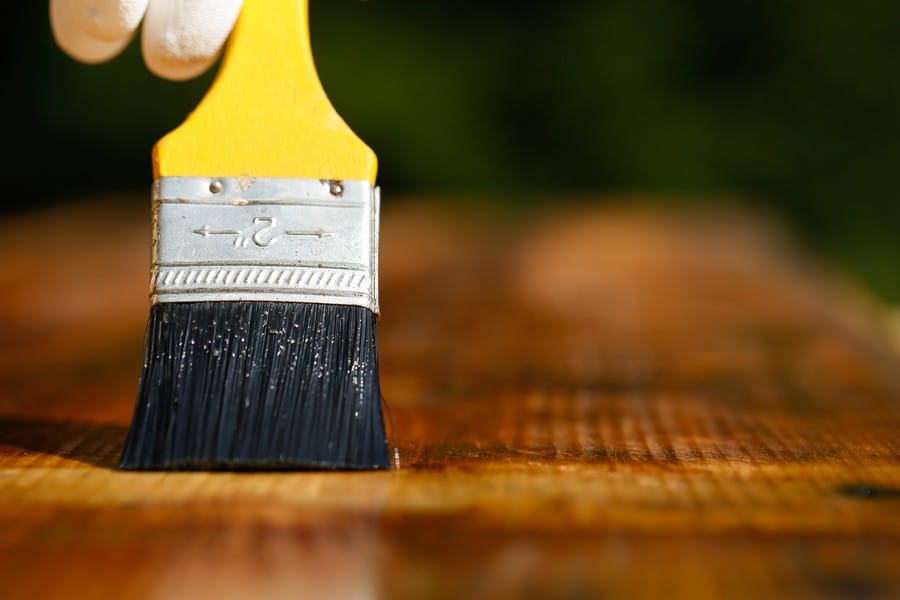Call Our Sussex Damp Experts team now for a free quote, consultation and advice:

Excessive moisture in buildings and structures is the primary culprit behind rotten wood. This is because it creates an ideal environment for rot fungi to flourish. There are two types of fungi that cause decay: wet rot and dry rot. Wet rot requires a higher level of moisture content to thrive, typically around 50% or more, while dry rot can germinate at a lower moisture content of approximately 20-30%. Although there are various forms of wet rot fungi, only one type of dry rot fungus exists. To effectively combat this issue, it’s crucial to differentiate between the two types when dealing with affected timber.
Wet rot is a type of wood decay that requires a higher moisture level in the timber or other permeable surface than dry rot. Typically, wet rot occurs when the moisture level reaches approximately 50%, although dry rot can form with as little as 20%. External leaks from plumbing, guttering, stone pointing, or downpipes are common causes of high levels of moisture that lead to wet rot. To prevent its recurrence, it is essential to inspect the structure and repair any leaks before addressing the wet rot itself. Once the source of moisture has been eliminated, wet rot will cease forming. However, in most cases where damage has already occurred due to this condition, replacement of affected wood may be necessary for complete restoration.

Dry rot is a fungus that requires at least 20% moisture content in wood to grow, and it does not thrive in dry environments despite its name. It is commonly found in homes with excessive humidity and poor ventilation, which can lead to condensation on windows as an early warning sign. Proper home ventilation is crucial for avoiding moisture buildup in very damp or humid environments. Moisture can seep through leaks just like it would with wet rot, so identifying and eliminating the source of moisture before treating the fungus is critical. Dry rot often hides behind walls or under floorboards where it can cause significant damage to wood if left undetected. While fungicides are available for treatment, having a surveyor assess the full extent of the damage may be necessary by removing plastering. As with wet rot, any compromised wood will likely need replacement after treatment.
Dry rot is a pernicious issue that must be addressed as soon as possible. This type of fungal decay spreads from the source of damp and destroys timber and other building materials. Wet rot fungus, while more common than dry rot fungus, tends to be more localised in its effects on nearby wood. However, wet rot should not be ignored since it can cause severe structural damage if left untreated.
The Serpula Lacrymans fungus is the only one responsible for dry rot and poses the greatest threat to buildings due to its ability to spread throughout an entire structure. Any exposed timber with a moisture content exceeding 20% can fall victim to dry rot, which can arise from faulty interior plumbing or penetrating moisture caused by defective render, guttering or downpipes.
Wet and dry rots are capable of causing significant harm before homeowners become aware of their presence because they may grow between wall coverings or beneath flooring without being detected until it’s too late.
Wooden surfaces are susceptible to the growth of a black fungus, which can cause discolouration and make the wood feel mushy and spongy to the touch. If left untreated, this decay can dry out and lead to the splitting and disintegration of the wood.
The presence of wet rot fungus may also destroy any paint finish on the surface, even if it appears intact from below. It is important to note that while paint may seem undamaged at first glance, it could be decaying from behind. Therefore, regular inspection and treatment are necessary for maintaining wooden structures in good condition.

The telltale signs of dry rot are deep fissures running across the grain of the wood, accompanied by a white sheet-like growth known as mycelium. When exposed to light, this fungus takes on a lemony yellow hue. The affected wood will be brown and crumbly due to the feeding activity of dry rot. While most damage is limited to the wood itself, in some cases large flat mushroom-like fruiting bodies can grow through finishes such as plaster or paint. It is essential to identify and treat dry rot promptly before it spreads further and causes more extensive damage.
It is crucial to differentiate between the two types of wood rot, as both can lead to severe structural damage if left untreated. Wet rot fungi thrive in damp wood and break down cell walls while consuming nutrients from the timber. This process can cause significant harm to your home’s construction, leading to a loss of structural integrity if not addressed promptly. As wet rot progresses, it weakens the wood and poses a danger not only to specific areas such as window frames, doorframes and ceilings but also threatens the entire building’s timber structure. Therefore, seeking professional assistance for wet rot treatment at the earliest opportunity is critical. If you suspect that your home may be affected by dry or wet rot problems, do not hesitate to contact Sussex Damp Treatments for expert advice on **01273 257 212**. Delaying treatment will only increase costs in the long run; hence prompt action is essential when dealing with this issue.
Dry rot is a perilous issue that can severely affect the integrity of your property. It’s crucial to have it diagnosed by an expert and treated promptly to prevent further damage. A proficient dry rot surveyor will inspect your property to identify the source of dampness and provide detailed information on how external flaws or other factors are contributing to the problem. Technicians will then remove all fungus-decaying wood, followed by applying fungicide dry rot treatment in affected areas. Additionally, underfloor ventilation installation is necessary for increasing airflow within the house and preventing future occurrences of dry rot. By addressing these issues with professional expertise, you can safeguard your property from potential structural damage caused by this hazardous condition.
Call Our Sussex Damp Experts team now for a free quote, consultation and advice:
To effectively treat wet rot, it is important to follow a series of recommended steps. First and foremost, a thorough evaluation of the property must be conducted by an expert in property care. This will help identify the source of dampness that is causing the problem. Once identified, the surveyor will explain whether it is penetrating damp or condensation that is generating the moisture. Any timber affected by damp rot should then be replaced with new timber to prevent further damage.
After replacing any damaged wood, a wood hardener and preservative should be applied to the surrounding area for added protection against future outbreaks of wet rot. By following these steps, you can ensure that your property remains free from this damaging condition and continues to provide you with safe and comfortable living conditions for years to come. Trust in our expertise at Sussex Damp Treatments for all your wet rot treatment needs.
Sussex Damp Treatments offers a wide range of high-quality products and brands to choose from. Every situation has its unique requirements and limitations, resulting in numerous potential procedures and strategies for treating rot damages. It is crucial to engage professional services as soon as any symptoms of wood rot appear, such as discolouration or softness in the timber. Neglecting it can lead to severe structural damage that may compromise the stability of your home. If you are concerned about wood rot, our team of experts is available for inspection and advice on cost-effective solutions tailored to your specific needs. Contact us at 01273 257 212 to schedule a survey with one of our experienced surveyors who will discuss your problems and requirements before providing you with a customised quote that meets all your expectations.

Sussex Damp Treatments is a team of damp proofing specialists catering to commercial and residential property owners. Our experts conduct thorough surveys, provide treatments, and carry out repairs for wood, walls, ceilings, and floors. We have skilled rot treatment specialists who can assess the severity of any damp issue on your property with precision. Our professionals are trained to meet or exceed the standards set by regulatory bodies. All our surveyors hold Certified Surveyors in Remedial Treatment (CSRT) certification ensuring top-notch service delivery.
Our services come with numerous benefits such as almost two decades of combined experience and a group of welcoming specialists possessing diverse skill sets at reasonable prices. We offer real estate inspections along with repairs for both dry rot and wet rot issues that come backed by up to 30 years guarantee on all work done. With an impressive track record behind us, we invite you to contact us via email or phone at 01273 257 212 if you’re experiencing any damp problems in your property so we can help resolve them effectively and efficiently.


Max and his team have been at our property all week and I really can’t thank them enough for the fantastic job they’ve done on plastering both our walls and ceilings. They have literally transformed the appearance of our house! Not only has Ma…
From start to finish Max has been incredable. His knowledge lin damp proofing is second to none and his team where very clean and polite. The plastered finish was like glass so happy we choose Max Plastering for job.
Lovely bunch of lads left a very neat and clean job. Problem was solved.
Perfect Finnish and all left clean and tidy and no mess. Used Max previously and would not hesitate to ask him carry out more work.
Max, Harvey and Stuart arrived promptly as arranged. Done a great job on our outside rear wall. Work completed to a high standard, removal of all old material and cleaned up after themselves. I am so pleased with the standard of their work they ar…
They turned up on time and carried out the works in a very professional manor leaving the front of the house clean and tidy. Very impressed would definitely recommend.
I have to say that on every level Max (with Stuart and Harvey) did an extremely professional job! They explained what they were going to do, they were polite and courteous and respected that they were coming into our home. The plastering is of the…

I called max and he managed to come around the same day to do a survey. The next day I received an extremely detailed survey compared to any other damp proofer which made me feel very at ease that he was going to do the right job. Max and team tur…
Contact Sussex Damp Experts Now to Speak With an Expert.